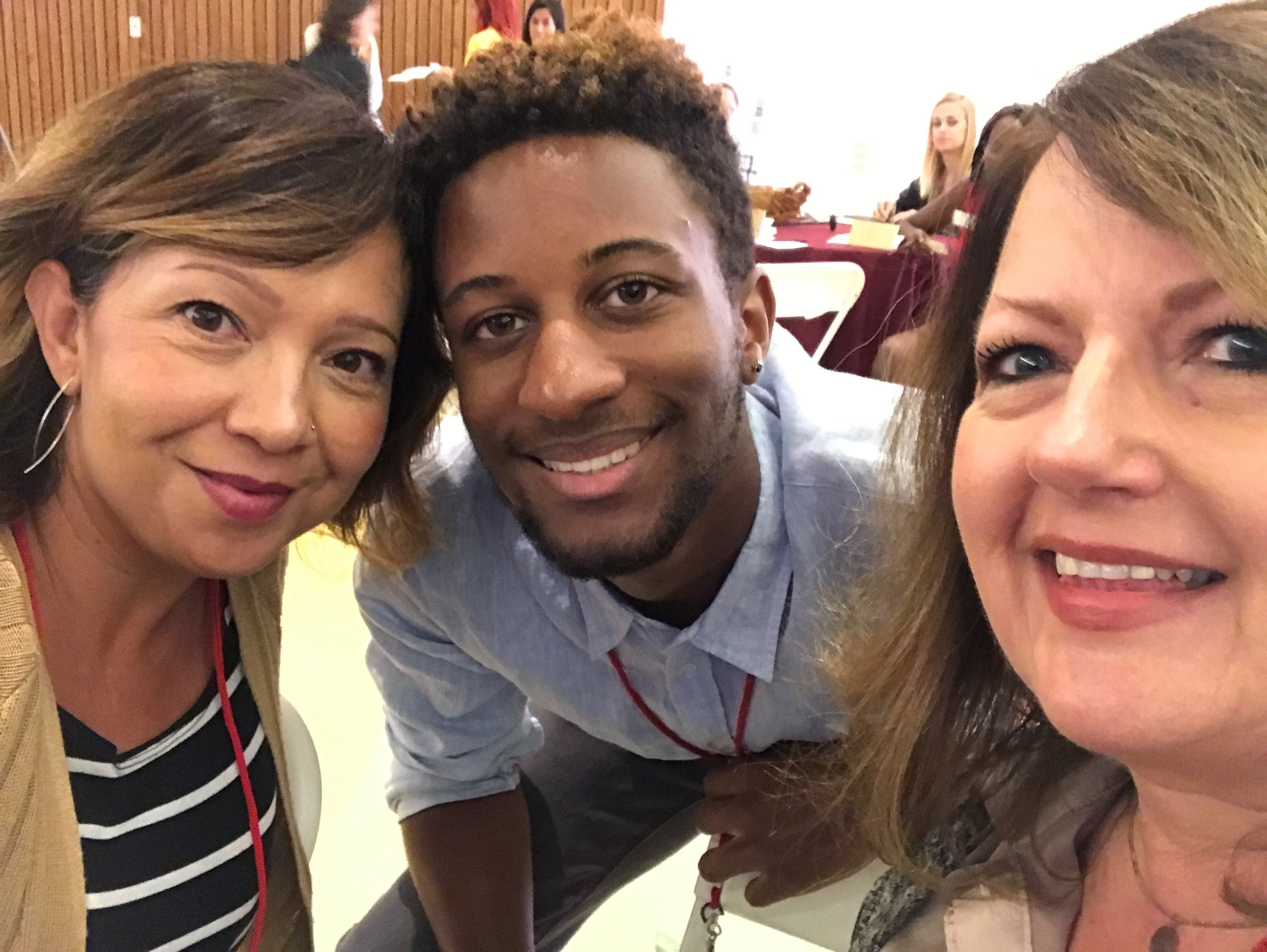By Robert Cain ’21 & Sofia Trigo ’20

In the first of a four part Nonprofit Success Series, social innovators and non-profit organizations gathered to learn how to best maximize effectiveness and increase their potential for success.
Leaders Scott Sherman, Senior Director of Social Innovation & Co-Curricular Programming, and Gemma Bulos, Director of Social Innovation and Impact, at the Kravis Leadership Institute explained that while working in the nonprofit sector it is incredibly common to confront frustration and feel utterly overwhelmed when attempting to achieve certain goals. In her introduction to the group, Bulos explained that this nonprofit success series would target how to tackle this ‘uphill battle’ that so many nonprofit groups face. She noted that upcoming events in the series would focus on diversifying revenue, building financial resilience, infusing social innovation into work, and learning how to influence policy.
Throughout his presentation, Sherman emphasized the importance of optimism and creativity when considering nonprofit impact. He explained how organizations can build capacities and resilience for both themselves and their communities and pointed to three key principles of transformative action.
Scott identified these key principles as such: consistently speaking the truth and shining a light on injustices, transforming feelings of animosity into goodwill – what he coined a kind of social ‘aikido’ practice – and, lastly, creating an innovative solution that uplifts all stakeholders and produces a mutual ‘win’ for all involved parties. The group engaged in various interactive activities, encouraging them to explore these principles and learn about one another’s work in the nonprofit sector.
….
Sitting in on the activity for the first transformative action principle: ‘shining a light on injustices’, I was able to interact on a one-on-one basis with numerous nonprofit leaders. This, I realized, was precisely the goal for the event. Activities that encouraged, demanded even, students to genuinely converse and engage with leaders across the nonprofit spectrum.
Over lunch at the Athenaeum, I met Debra Watkins, founder and executive director of NECON: National Emergency Communications Organization Network and Pam Hogan, executive director of the Fender Museum of the Arts Foundation. Both women were leaders in their respective fields yet, nevertheless, eager to answer my questions and shed light on their roles. They shared the sentiment that nonprofit work required genuine ambition and advised me to pursue something I find truly fulfilling. Watkins, elaborated on her personal motivation to found NECON: the lack of communication and interconnection that exist between government agencies, coupled with the September 11th attacks. She remarked that this travesty provoked in her a keen sense of responsibility and civic obligation to help aid citizens in formulating an effective and immediate response to national disasters.
I was reminded, too, of Sherman’s earlier comment regarding the inadequate coverage of positive news. We are so tuned into harsh realities and tragic events that we often dismiss the immense impact nonprofit organizations are making around the country and the world. Surrounded by such passionate, dedicated and motivated individuals, I realized this very optimism Sherman mentioned. As an observer, the palpable sense of loyalty these leaders had for their organization and its motivating purpose was moving.
Later, I sat down with first year student participant Daniela Finkel ’21 who volunteers for the Andrew Grene Foundation focused on transforming and improving lives in Haiti.
“I think hearing everybody else talk about their experiences was really unique. I hear about a lot of different minor community service projects on campus but I rarely get to speak with people who are so invested in what they do. Most of the time if I’m talking about service it is with another student who is explaining their role in an organization but being able to hear organization leaders perspectives was super informative and eye opening.”
Additionally, Tammy Marine, Executive Director for Habitat for Humanity Inland Valley, gave positive feedback of the event. She listed her major takeaways as “the importance of communications and messaging, a reminder about the importance of relationship building in the workplace and with supporters, and just a general rejuvenation being surrounded by so many passionate and caring people in the nonprofit sector.”
And when asked whether or not she would recommend this conference to anyone else, she respond with a convincing “yes!”
But even after all of the engaging activities, informative lectures, and group interactions, the emotional highlight of the event was the brief connection shared between Tammy and first year CMC student, Robert Cain ’21. During the activity where participants shared the stories behind their respective nonprofits, Tammy shared her association with the Habitat for Humanity Foundation, which immediately struck a nerve in Robert because his home was built by Habitat. Nearly in tears, Robert interjected by asking Tammy if he could hug her. She kindly accepted.
Overall, the day filled with experiential learning, bond forging, and unforgettable memories; but we all gained something far more valuable than all of these items combined. By witnessing how nonprofit work transcends past regional, state, and even national borders, we learned that having an impact lies less in how successful the nonprofit seems and more so in how we affect the people we are tasked to help. In effect, impact equates to the number of lives changed.

